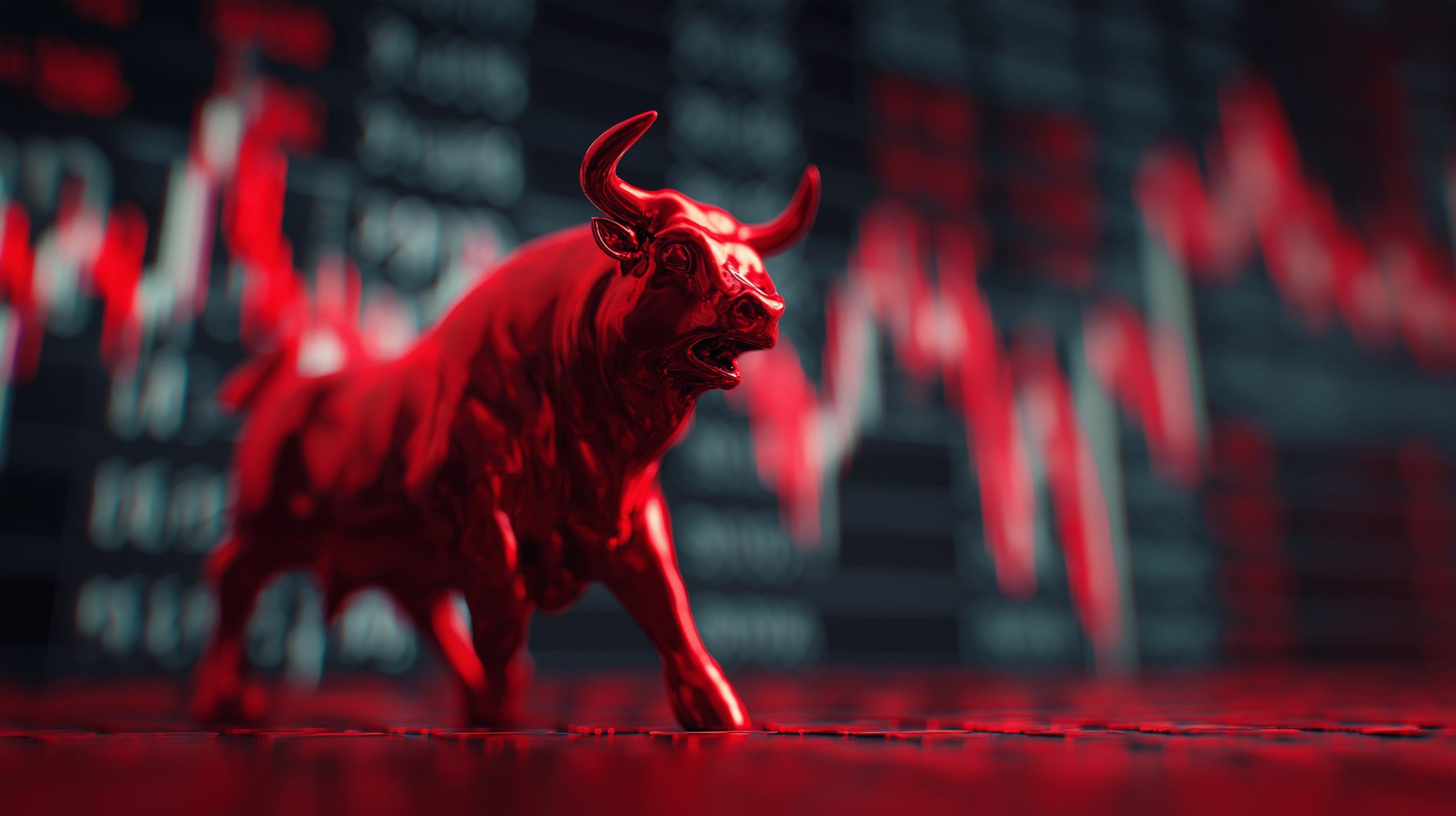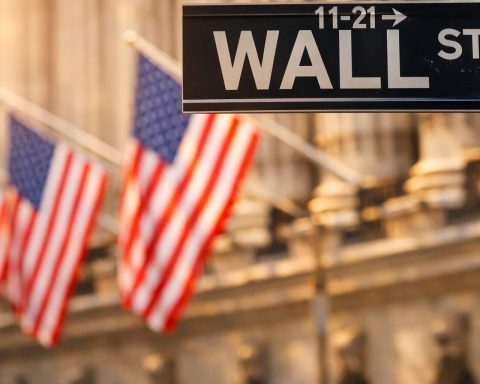- Stock indexes surge: On Friday, October 24, 2025, U.S. equities climbed to new highs. The Dow Jones Industrial Average rallied about 400 points (≈0.78%) to close at a record high. The S&P 500 rose roughly 0.79% and the Nasdaq Composite gained about 1.03% [1]. Small-cap stocks also joined the rally, with the Russell 2000 index up about 0.9% [2].
- Inflation eases: September’s consumer inflation came in cooler than expected – the U.S. Consumer Price Index rose only 0.3% in September (3.0% year-over-year, versus 3.1% forecast) [3] [4]. Investors took the data as a sign that price pressures are abating, bolstering confidence in a Fed rate cut. Markets now see nearly a 90% chance of a 25‑basis‑point Fed cut at the Oct. 29 meeting [5] [6].
- Tech leads, energy lags: The rally was driven by tech and chip stocks. Chipmaker AMD jumped ~6.5% and Nvidia gained ~4.2% [7]. Other big tech names like Intel (+3.8%), Micron (+3.1%), Apple (+2.6%), and Microsoft (+2.4%) also climbed [8]. In contrast, cyclical and energy stocks fell – Boeing slid ~2.1%, Exxon Mobil ~1.8%, Chevron ~1.6%, while defensive names like Pfizer and Coca-Cola dipped around 1–1.4% [9].
- Fed outlook: With inflation slowing, analysts say the odds of rate cuts are high. “Analysts say the broad-based rally reflects growing confidence in the economy and expectations that the Federal Reserve could cut interest rates soon” [10]. Indeed, traders are pricing in a 25‑basis‑point cut at the Oct. 29 Fed meeting, and some forecasters project two or more cuts by early 2026 [11].
- Caution remains: Despite the euphoria, some caution persists. A partial U.S. government shutdown (now in its 24th day) has paused many data releases, making investors wary [12]. Geopolitical and trade uncertainties also linger. Yet strong corporate earnings reports (especially in tech) have largely outweighed the risks so far, keeping markets buoyant.
Record Highs on All Fronts, Led by Tech Stocks
Friday’s broad rally sent all major U.S. indexes to fresh highs. The Dow’s 400‑point gain topped the largest single‑day jump of 2025, while the S&P 500 and Nasdaq also closed at record levels [13]. Market leadership was clear: technology and semiconductor firms outperformed. For example, Advanced Micro Devices surged 6.5% and Nvidia 4.2% on Friday [14]. These gains reflect strong demand for AI and cloud computing products, as well as better-than-expected earnings in the sector.
By contrast, shares of industrial and energy companies lagged. Boeing fell about 2.1% amid industry concerns, and major oil companies such as Exxon Mobil and Chevron slipped 1–2% as oil prices eased. The divergence highlights that investors are favoring growth-oriented tech firms over traditional cyclicals right now. Even consumer names like Walmart and Johnson & Johnson drifted lower by around 1% [15], suggesting caution about near-term demand.
Cooler Inflation and Fed Policy Drive Optimism
A key catalyst for the rally was Friday’s consumer-price index (CPI) report. U.S. inflation in September was a touch below forecasts: up 3.0% year-over-year (vs. 3.1% expected) and just 0.3% for the month [16] [17]. Crucially, the jump in gas prices was offset by smaller increases in rents and other services. The muted inflation reading reinforced expectations that the Federal Reserve will soon begin easing monetary policy.
“U.S. consumer prices increased slightly less than expected in September… keeping the Fed on track to cut interest rates again next week,” Reuters noted [18]. In fact, markets are pricing in a high likelihood of a 25‑basis‑point rate cut at the October 29 Fed meeting [19]. After September’s earlier quarter-point cut, analysts now see two more cuts by early 2026 if inflation remains moderate [20]. This prospect of lower borrowing costs has put a bid under stocks.
Fed officials have hinted that incoming data could guide their next move. With recent data pointing to slower price growth and cooling labor demand (the September jobs report was delayed by the shutdown), Fed speakers like Governor Christopher Waller have signaled a cautious approach. Waller recently warned there are contradictory signals – “negative job growth and 4% GDP growth” – meaning the Fed must weigh tradeoffs carefully [21]. Overall, Fed Chair Jerome Powell and others have emphasized that any further cuts will be gradual. Still, investors have interpreted the easing inflation trend as a green light for at least one more rate cut this year.
Expert Insights: AI Boom Offsetting Headwinds
Market analysts note that the rally reflects multiple factors coming together. “There are conflicting forces… tariffs… immigration,” said Gregory Daco, chief U.S. economist at EY-Parthenon. “At the same time, we’re seeing a great deal of… investment on the AI front… These forces are offsetting one another” [22]. In other words, stronger-than-expected growth in AI, cloud computing, and corporate profits has helped counterbalance drag from trade frictions and other headwinds.
Many strategists say that as long as inflation stays tame, the Fed’s pivot should continue to support stocks. One Stanford professor quoted in Reuters expects “several more” cuts this cycle to protect the jobs market, though done cautiously. At the same time, some caution that any resurgence in inflation or data surprises could quickly change sentiment. For now, most agree the major indexes have been driven by three factors – cooler inflation, anticipated Fed easing, and robust tech earnings [23] – and are buoyed by optimism into year-end.
Outlook and Forecast
With the Fed meeting looming, market participants are closely watching for any policy clues. A smooth cut next week would likely extend the rally, especially if accompanied by upbeat forward guidance. Many analysts now forecast that U.S. stocks can make further gains into year-end if economic data remain steady and the Fed signals continued support.
However, uncertainty is not gone. The lingering government shutdown means key reports (like GDP and jobs) are delayed, adding more guesswork. Trade and geopolitical issues – from U.S.-China relations to Middle East tensions – also pose threats. As one market veteran put it, “Investors remain optimistic but cautious,” noting that record highs can quickly reverse on bad news [24].
For now, the market forecast is cautiously bullish: Analysts generally expect equities to hold onto gains in the near term. Many model portfolios remain overweight growth and tech stocks. But experts advise balanced portfolios, given the mixed economic signals. In sum, U.S. stocks ended the week strongly on inflation surprises and tech strength, and most forecasters say the trend could continue into 2026 – provided inflation really keeps cooling and Fed cuts materialize [25] [26].
Sources: Financial news reports and market data on Oct 24–25, 2025 [27] [28] [29]. Expert quotes and forecasts are from analysts and officials cited therein. (See cited links for full details.)
References
1. economictimes.indiatimes.com, 2. economictimes.indiatimes.com, 3. economictimes.indiatimes.com, 4. www.reuters.com, 5. economictimes.indiatimes.com, 6. www.reuters.com, 7. economictimes.indiatimes.com, 8. economictimes.indiatimes.com, 9. economictimes.indiatimes.com, 10. economictimes.indiatimes.com, 11. economictimes.indiatimes.com, 12. economictimes.indiatimes.com, 13. economictimes.indiatimes.com, 14. economictimes.indiatimes.com, 15. economictimes.indiatimes.com, 16. economictimes.indiatimes.com, 17. www.reuters.com, 18. www.reuters.com, 19. economictimes.indiatimes.com, 20. economictimes.indiatimes.com, 21. www.reuters.com, 22. www.reuters.com, 23. economictimes.indiatimes.com, 24. economictimes.indiatimes.com, 25. economictimes.indiatimes.com, 26. www.reuters.com, 27. economictimes.indiatimes.com, 28. www.reuters.com, 29. www.reuters.com










